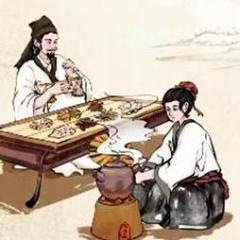-
Welcome to the eG Forums, a service of the eGullet Society for Culinary Arts & Letters. The Society is a 501(c)3 not-for-profit organization dedicated to the advancement of the culinary arts. These advertising-free forums are provided free of charge through donations from Society members. Anyone may read the forums, but to post you must create a free account.
China's Many Diverse Cuisines
-
Similar Content
-
"Pizza" in China 1 2
By liuzhou,
- 43 replies
- 16,454 views
-
- 24 replies
- 3,429 views
-
- 109 replies
- 35,552 views
-
- 176 replies
- 58,967 views
-
Italy v China
By liuzhou,
- 12 replies
- 2,835 views
-
-
Recently Browsing 0 members
- No registered users viewing this page.




Recommended Posts